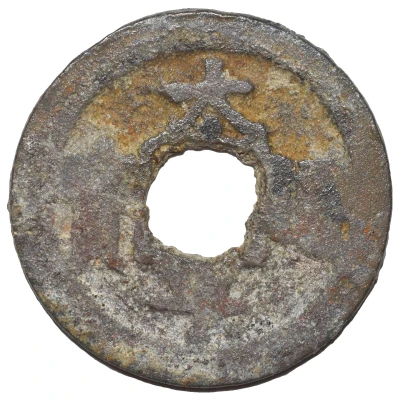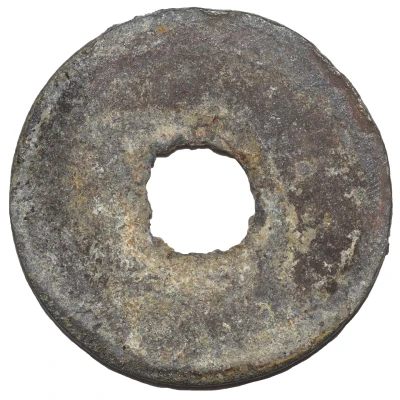


© Fred Cherrygarden
1 Cash - Taiping Sanfotsi; Palembang ND
| Bronze | 2.49 g | 22 mm |
| Issuer | Pre-Islamic kingdoms (Indonesia) |
|---|---|
| Type | Standard circulation coin |
| Years | 976-1050 |
| Value | 1 Cash |
| Currency | Srivijaya |
| Composition | Bronze |
| Weight | 2.49 g |
| Diameter | 22 mm |
| Thickness | 1 mm |
| Shape | Round with a square hole |
| Demonetized | Yes |
| Updated | 2024-10-05 |
| Numista | N#258766 |
|---|---|
| Rarity index | 94% |
Reverse
Blank.
Edge
Plain
Comment
Sanfotsi (三佛齊), also spelt Sanfoqi, was a trading polity in Southeast Asia mentioned in Chinese sources dated from the Song dynasty, ca. 12th century. It is often considered to be another name for the Srivijaya Empire, although its actual extent is uncertain; while some believe that it was a large thalassocratic empire, there is also a theory that it only reigned over the Palembang area in Sumatra.The coins issued by Sanfotsi were imitative of various Song dynasty cash, minted in Palembang. As a general rule, they were issued with the official Chinese permission, likely to be used in tribute to the Emperor so that he would provide protection from the Chola invaders. Such coins are not properly studied as of yet and remain unpublished for the most part.
Interesting fact
One interesting fact about this coin is that it was used in the Pre-Islamic kingdoms of Indonesia, specifically in the city of Palembang, during the 10th to 11th centuries. It was made of bronze and weighed 2.49 grams, which was a significant weight for a coin at that time. The coin features an intricate design, including a central hole and patterns on both sides, which were likely used for authentication and to indicate its value. Despite its age, this coin remains a valuable piece of history and a testament to the rich cultural heritage of Indonesia.